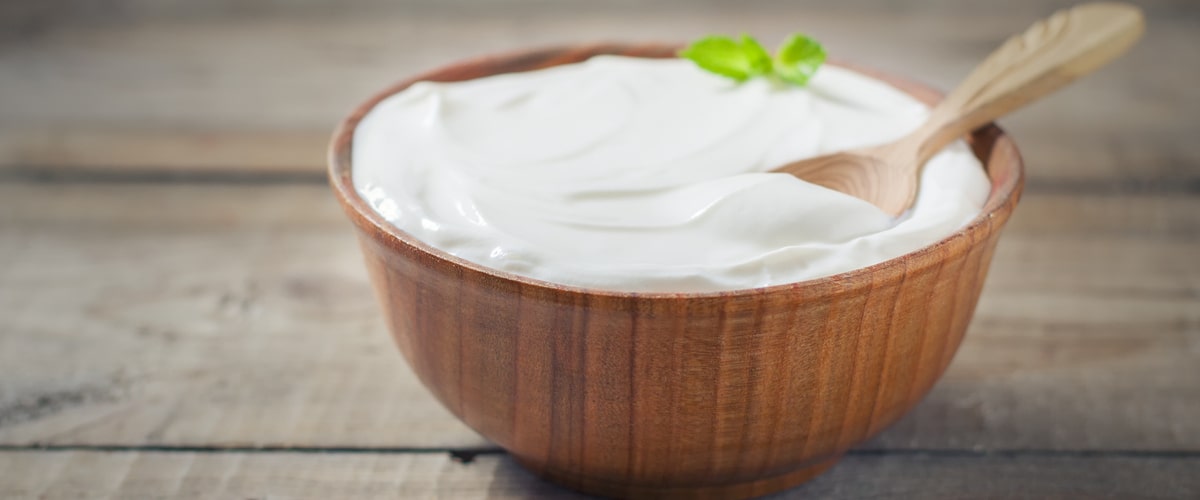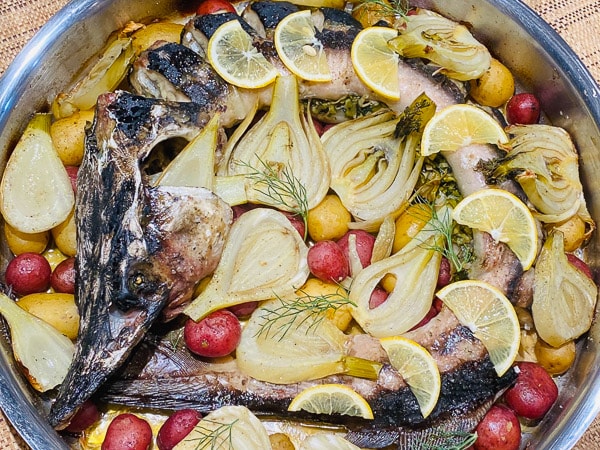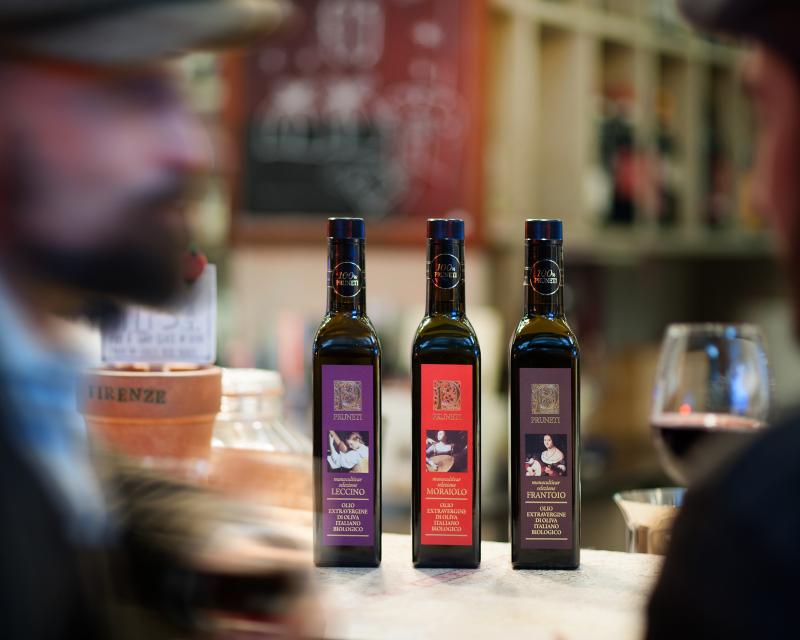Exploring the World of Fermented Dairy: Yogurt, Kefir, and Cultured Butter
Taste and nutrition come together in the delectable world of fermented dairy! Home chefs and gourmet food consumers alike have long discovered how easily these luscious products delight their taste buds, while also providing vital nourishment for our bodies. Yogurt, kefir, and cultured butter are all healthful additions to any diet - offering protein-rich enrichment along with rib-sticking satisfaction. In this blog post, we’ll explore some of the key benefits associated with each product separately - and then take a look at what happens when you combine them in delicious recipes. This journey includes memorable tastes as well as essential information about how fermented dairy can boost your wellbeing — get ready for one incredible expedition!
Introducing fermented dairy products and their health benefits

If you've ever enjoyed yogurt, cheese, or kefir, then you may have already indulged in fermented dairy products without even realizing it! These flavorful staples are actually loaded with health benefits thanks to the fermentation process. Fermentation adds probiotics, or "good bacteria", to the dairy which can help improve digestion, boost the immune system, and even aid in weight loss. Not only that, but fermentation also breaks down lactose and makes dairy products easier to digest for people who are lactose intolerant. So, next time you're reaching for that creamy yogurt or sharp cheddar, keep in mind all the good things that come with enjoying fermented dairy products.
How to make yogurt, kefir, and cultured butter at home
Are you tired of buying expensive, store-bought yogurt and kefir that are loaded with additives and preservatives? Why not make them from scratch at home? Not only is it cost-effective, but you also have total control over the ingredients and can customize them according to your taste. Making yogurt, kefir, and cultured butter is surprisingly easy and requires minimal effort. With just a few ingredients, some patience, and a bit of know-how, you can enjoy delicious, probiotic-packed dairy products that will have you feeling good from the inside out. Trust us, once you try homemade yogurt, kefir, and cultured butter, you'll never go back to the store-bought varieties.
Making Homemade Yogurt
Ingredients:
- 4 cups of milk (any type)
- 1/4 cup plain yogurt with live active cultures
Instructions:
- Heat the milk in a large saucepan over medium heat until it reaches 180°F. Stir occasionally to prevent scorching.
- Take the pan off the heat and let it cool down to 110°F. You can use an instant-read thermometer to check the temperature.
- Once cooled, add in the yogurt with live active cultures and whisk until fully incorporated.
- Pour the mixture into individual containers or a single container if making one large batch.
- Place the containers in a warm spot (ideally between 110°F and 115°F) for 5-7 hours, or until it reaches your desired consistency.
- Once done, transfer to the refrigerator and enjoy within 1 week!
Making Homemade Kefir
Ingredients:
- 2 cups of milk (any type)
- 2 tablespoons of kefir grains
Instructions:
- In a jar or container, combine the milk with the kefir grains.
- Cover loosely with a lid and let it sit at room temperature for 12-24 hours (depending on how tangy you want it to be).
- Gently stir the kefir and pour it into a separate container.
- Place the new container in the refrigerator and enjoy within 1 week!
Making Homemade Cultured Butter
Ingredients:
- 2 cups of heavy cream (preferably organic or grass-fed)
- 2 tablespoons of plain yogurt with live active cultures
Instructions:
- In a large bowl, whisk together the cream and yogurt until well combined.
- Cover loosely with a lid and let it sit at room temperature for 24 hours.
- Transfer to an ice cream maker or food processor and churn until thickened (about 5 minutes).
- Once done, transfer to a container and store in the refrigerator for up to 1 week. Enjoy!
Exploring different types of starters for each product
When it comes to elevating the flavor profiles of our favorite dishes, choosing the right starter can make all the difference. From tangy yogurt-based dips to fragrant spice blends, there are countless options to explore. For meat dishes, try a spicy harissa paste or a sweet and savory marinade made with soy sauce and honey. Vegetarians can experiment with hummus or babaganoush as a flavorful accompaniment to roasted vegetables. And don't forget about the importance of a good bread starter - a sourdough or herb-infused butter can take a meal from good to great. Whatever your dish of choice may be, taking the time to explore the right starter can unlock a world of new and exciting flavors.
Creative ideas for using fermented dairy in recipes
Fermented dairy is a versatile ingredient that can enliven many recipes. When we think of fermented dairy, yogurt is the first thing that comes to mind. But there's more to explore. For example, kefir, sour cream, buttermilk, and crème fraîche are also fermented dairy products that can add a rich and tangy flavor to dishes. You might try using kefir instead of buttermilk in pancakes, or mixing crème fraîche with herbs and spreading it on grilled meat. Fermented dairy also works wonders in baked goods, adding a subtle tang and improving texture. Think about adding yogurt to muffin batter or using sour cream in a cake recipe. With a little creativity, the possibilities are endless. By experimenting with fermented dairy products and incorporating them into your cooking repertoire, you'll be adding a new dimension of flavor and nutrition to your meals.
The importance of sourcing quality ingredients
As consumers become more conscious of what they are putting into their bodies, sourcing quality ingredients has become a top priority for restaurants and food companies. Using high-quality ingredients not only ensures that the final product is flavorful and nutritious, but it also supports sustainable practices and helps to strengthen the local economy. As a chef, I am passionate about sourcing fresh, locally-grown produce and proteins that are free from harmful chemicals or additives. By taking the time to carefully select ingredients, we can create dishes that not only taste great, but are also better for our customers and the environment. In a world where food production is often driven by profit margins, it is more important than ever to make responsible choices that prioritize quality and sustainability.
A comprehensive guide to fermentation safety & storage
Fermentation can be an incredibly rewarding and satisfying process, but it's also important to remember that it involves living organisms and can be potentially hazardous if safety measures aren't taken seriously. That's why it's essential to have a comprehensive guide to fermentation safety and storage. With the right knowledge and approach, you can ensure that your fermentation experiments are successful, and that you and your loved ones stay safe and healthy throughout the process. From choosing the right equipment to understanding the basics of food safety and sterilization, this guide will cover everything you need to know to start fermenting with confidence. So whether you're a seasoned pro or just starting out, let's dive in and explore the exciting world of fermentation together!
Though the process of making fermented dairy at home can seem daunting, the health benefits far outweigh any anxiety. With a few simple steps, you can enjoy delicious and nutrient-dense foods like yogurt, kefir, and cultured butter. And don't forget about experimenting with different types of starters and having fun creating flavorful recipes! If done safely with quality ingredients, fermentation is an incredibly rewarding process that can benefit your body in profound ways. Remember to always source organic ingredients when possible and follow this comprehensive guide to fermentation safety & storage. Fermented dairy products should be an integral part of a balanced lifestyle—so go ahead: get creative in the kitchen and nourish your body with wholesome goodness!
Now you're ready to start fermenting and experimenting with the world of fermented dairy! Bon appétit!






